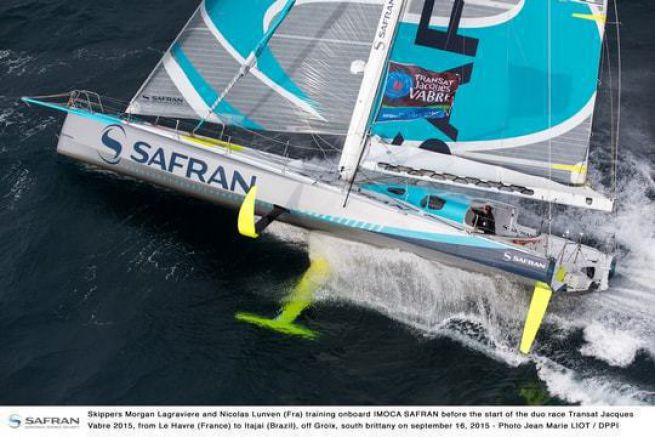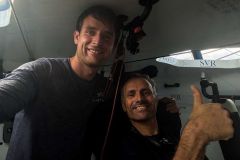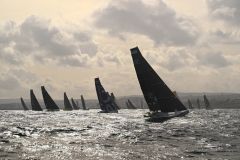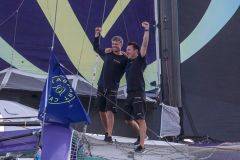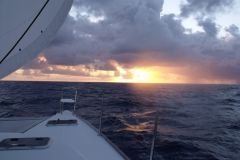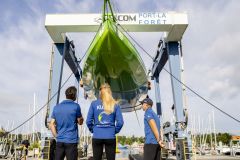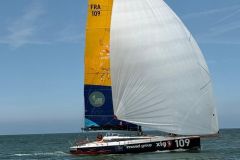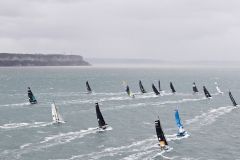The first 60-foot monohulls were designed to take part in major solo races as early as 1982 (BOC Challenge). But it was in 1989, during the Vendée Globe, that the craze was born. At the end of this event, in 1991, a handful of sailors, Alain Gautier, Isabelle Autissier, Christophe Auguin and Jean-Luc Van Den Heede created the International Monohull Open Class Association (IMOCA), which was recognized in 1998 as an international class by the ISAF (International Sailing Federation).
Today, the Imoca class manages the 60-foot Open monohulls (18.28 m). More than 30 skippers are now members of the class association, which includes two round-the-world races, a tour of Europe and several transoceanic races. The Imoca class serves to internationalize ocean racing, which consists mainly of single-handed and double-handed races.
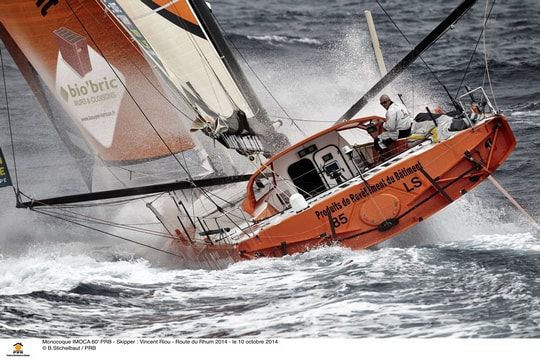
PRB - credit: Yvan Zedda
However, following dramatic accidents at sea, the skippers then called on the architects to define drastic safety standards, which have evolved over the years. Nowadays, keel profiles and rig configurations are framed with the aim of reducing costs and increasing the reliability of these boats, which are extremely solicited during a single-handed round-the-world race.
But this season, the big news will be the arrival of foils. Five new prototypes will be tested in real life during this Transat Jacques Vabre 2015. These appendages should theoretically bring a clear bonus to crosswind sailing, but they seem to perform less well in light airs. But the question will be to know what they really bring (Read Why add foils to an Imoca )
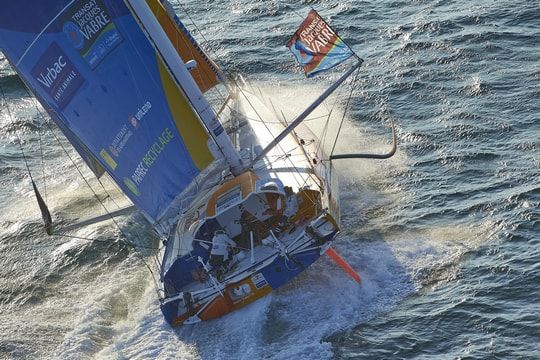
Saint-Michel Virbac - credit: Y.Zedda/StMichel-Virbac/Sailing
The variety of weather conditions will allow us to define more precisely the advantages and disadvantages of this technological advance before the next Vendée Globe. Some of the older prototypes could change their current configuration and the new Imoca boats could return to a more standardised system.
But the constant evolution of the 60-foot boats is not the only dimension of the Imoca class. It also works in the field of research and development of sustainable and responsible solutions to limit the impact on the environment, like the hydro, wind and solar energy sources adopted on many sailboats.
The Imoca class in the Transat Jacques Vabre 2015
They will be 20 boats to take the start of the Coffee Route, among which five units launched in 2015: Safran, Banque Populaire VIII, Edmond de Rothschild, St-Michel Virbac, HUGO BOSS . Within the Imoca class itself, there will be a battle between these latest generation boats and those that achieved very good results in the last Vendée Globe (Maître CoQ, PRB, Quéguiner-Leucémie Espoir, SMAâeuros¦).
Apart from testing the foils, this 12 e edition of the Transat Jacques Vabre will also serve to test the standard masts and keels defined by the new IMOCA rules.
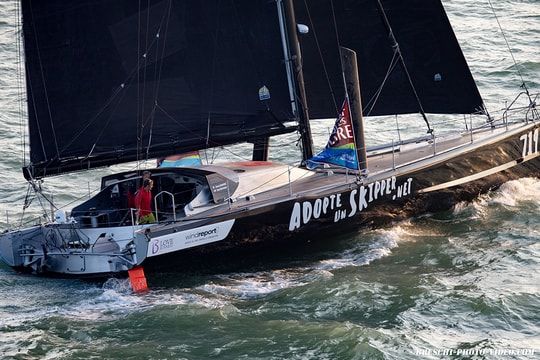
Adopeunskipper - credit: Christophe Breschi
The Imoca rule
In the 1990's and early 2000's, the Imoca 60's were often designed by Jean-Marie Finot and Pascal Conq, who incorporated innovations into their design. Thus, the boats are wider, about 5.80 m, and have a very open V, a flat deck, a small deckhouse and a minimalist closed cockpit. Finot-Conq boats are more stable downwind and have a smaller wetted surface. In 1994, Geodis, designed by Christophe Auguin, was the first Imoca to be built in carbon and nomex, which made it lighter (less than 5 tons).
For the 1996-1997 Vendée Globe, two important innovations were made by the two architects: a canting keel for Géodis and Isabelle Autissier's PRB and a wing mast supported by giant spreaders for Yves Parlier's Aquitaine Innovations.
But in 2010, when the economic crisis marks 2011 and 2012, the debate between one-design and prototype agitate the class. A compromise was therefore decided in 2013: keels and masts will be standard, with a choice between two possible models: wing mast or classic mast with a spreader bar, lateral ballast once again authorized, but limited to 4, and technical safety criteria reinforced (minimum righting torque increased from 22 to 25.5 tons.meters, 110° rollover angle instead of 112°, keel bulb weight fixed at 3.1 tons). Finally, the criterion that indicated that the heel of the boat "loaded in its worst configuration" should not exceed 10° disappeared.
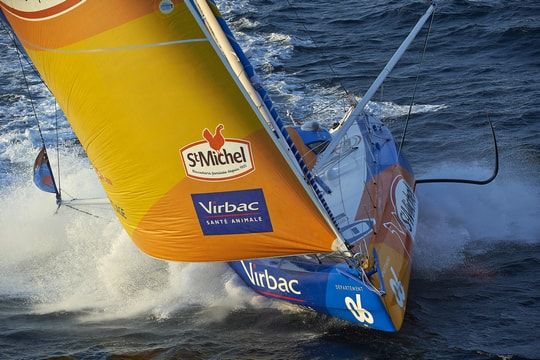
Saint-Michel Virbac - credit: Y.Zedda/StMichel-Virbac/Sailing
In 2014, the Imoca class undergoes some changes:
The maximum hull length of the monohull must be 60 feet (18.29 m) and the overall length must be 66 feet (20.12 m). The beam (width) must be less, since May 2013, than 5.85 m (16.5 ft). The maximum draft is 4.50 m. The boat must have 5 watertight bulkheads, five appendages (canting keel, rudders and asymmetrical daggerboards), are allowed, the air draft is limited to 29 m and the sail area is not regulated, however the number is limited to 9 sails.

 /
/ 